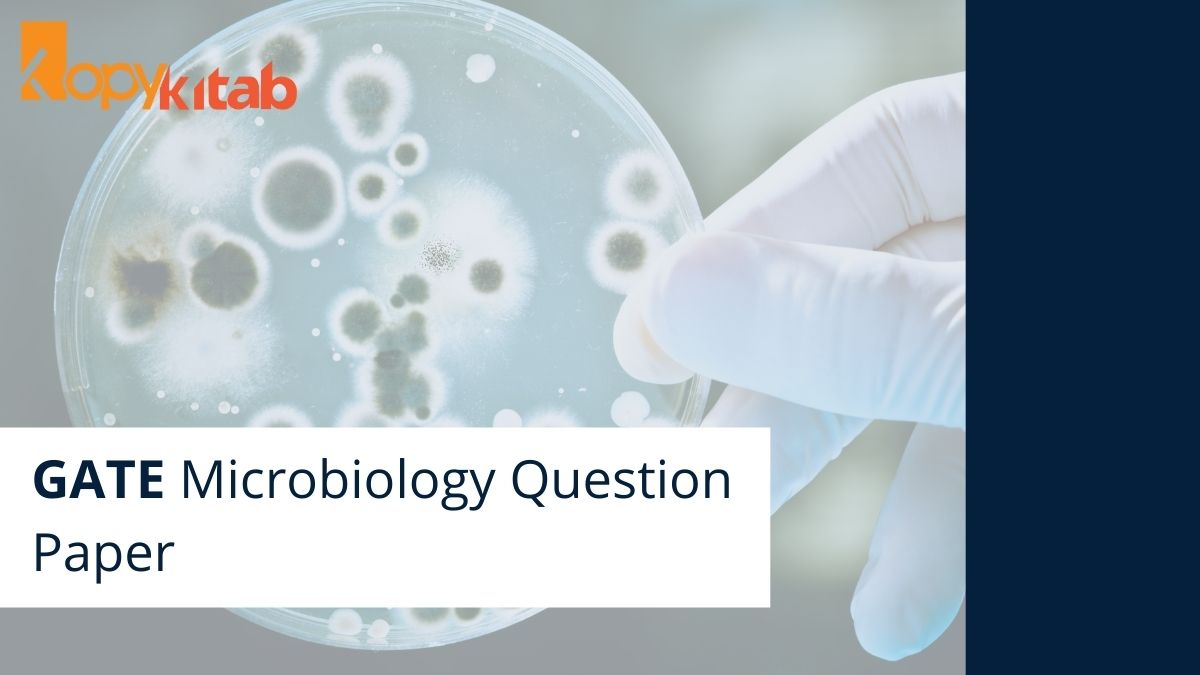
GATE Microbiology Question Paper: Download the GATE Microbiology Question Paper in pdf format. Today we’re offering GATE Question Papers of Microbiology. On this page, you may get GATE Microbiology Question Papers from modern-day to past few years. Previous papers are supplied with download choice in pdf format.
Download Free PDF GATE Microbiology Question Paper
| GATE Microbiology Exam Paper 2020 |
| GATE Microbiology Exam Paper 2019 |
| GATE Microbiology Exam Paper 2018 |
Benefits of Solving GATE Microbiology Exam Papers
There are many advantages related to the use of beyond examination papers such as the following:
- Help recognize probably examination time length
- Indicates usual variety of questions; Identifies a variety of selections provided
- Helps training session time required for every question
- Identifies fashion of examination questions (short-answer, a couple of preference or essays)
- Helps exercise examination techniques
GATE Microbiology Syllabus 2022
Unit 1: Historical Perspective
-
Discovery of microbial world
-
Landmark discoveries relevant to the field of microbiology
-
Controversy over spontaneous generation
-
Role of microorganisms in transformation of organic matter and in the causation of diseases
Unit 2: Methods in Microbiology
- Pure culture techniques
- Theory and practice of sterilization
- Principles of microbial nutrition
- Enrichment culture techniques for isolation of microorganisms
- Light-, phase contrast- and electron-microscopy
Unit 3: Microbial Taxonomy and Diversity
- Bacteria, Archaea and their broad classification
- Eukaryotic microbes: Yeasts, molds and protozoa
- Viruses and their classification
- Molecular approaches to microbial taxonomy
Unit 4: Prokaryotic and Eukaryotic Cells: structure and Function
- Prokaryotic Cells −
- Cell walls
- cell membranes
- mechanisms of solute transport across membranes
- Flagella and Pili
- Capsules
- Cell inclusions like endospores and gas vesicles
- Eukaryotic cell organelles −
- Endoplasmic reticulum
- Golgi apparatus
- Mitochondria
- Chloroplasts
Unit 5: Microbial Growth
- Definition of growth
- Growth curve
- Mathematical expression of exponential growth phase
- Measurement of growth and growth yields
- Synchronous growth
- Continuous culture
- Effect of environmental factors on growth
Unit 6: Control of Micro-Organisms
- Effect of physical and chemical agents
- Evaluation of effectiveness of antimicrobial agents
Unit 7: Microbial Metabolism
- Energetics: redox reactions and electron carriers
- An overview of metabolism
- Glycolysis
- Pentose-phosphate pathway
- Entner-Doudoroff pathway
- Glyoxalate
- Pathway
- The citric acid cycle
- Fermentation
- Aerobic and anaerobic respiration
- Chemolithotrophy
- Photosynthesis
- Calvin cycle
- Biosynthetic pathway for fatty acids synthesis
- Common regulatory mechanisms in synthesis of amino acids
- Regulation of major metabolic pathways
Unit 8: Microbial Diseases and Host Pathogen Interaction
- Normal microbiota
- Classification of infectious diseases
- Reservoirs of infection
- Nosocomial infection
- Emerging infectious diseases
- Mechanism of microbial pathogenicity
- Nonspecific defense of host
- Antigens and antibodies
- Humoral and cell mediated immunity
- Vaccines
- Immune deficiency
- Human diseases caused by viruses, bacteria, and pathogenic fungi
Unit 9: Chemotherapy/Antibiotics
- General characteristics of antimicrobial drugs
- Antibiotics: Classification, mode of action and resistance
- Antifungal and antiviral drugs
Unit 10: Microbial Genetics
-
Types of mutation
-
UV and chemical mutagens
-
Selection of mutants
-
Ames test for mutagenesis
-
Bacterial genetic system: transformation, conjugation, transduction, recombination, plasmids, transposons
-
DNA repair
-
Regulation of gene expression: repression and induction
-
Operon model
-
Bacterial genome with special reference to E. Coli Phage λ and its life cycle
-
RNA phages; RNA viruses; Retroviruses
-
Basic concept of microbial genomics
Unit 11: Microbial Ecology
- Microbial interactions
- Carbon, Sulphur and Nitrogen Cycles
- Soil microorganisms associated with vascular plants
We have included complete information regarding GATE Microbiology Question Paper . If you have any questions feel free to ask in the comment section.
FAQ: GATE Microbiology Question Paper
Why is the GATE exam for?
The purpose of the GATE exam is to test students’ knowledge and understanding of their Graduate level subjects in Engineering and Science.
What are the fees for the GATE exam?
Female candidates will have to pay ₹750/- per paper, SC / ST / PwD* category candidates will have to pay ₹750/- per paper and all other category candidates will have to pay ₹1500/- per paper.
Is GATE compulsory for Mtech?
No. it’s not at all compulsory.
What is a good score on the GATE exam?
GATE score is calculated out of 1000 while GATE marks are calculated out of 100. A candidate who wishes to get direct admission into IISC/ IITs must try to score nearly 1000.
